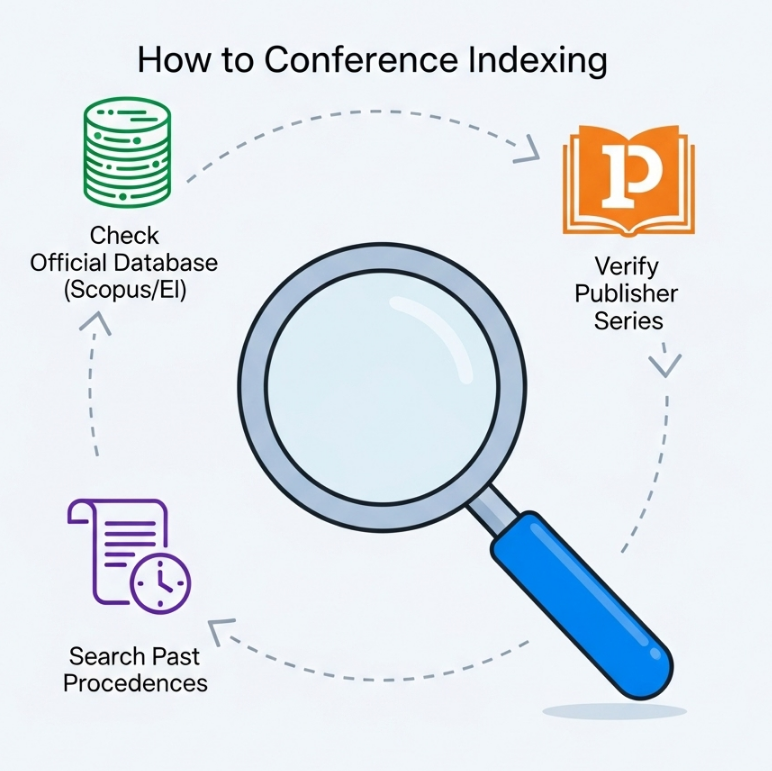f you've submitted a manuscript to a journal or applied for a research grant recently, you've likely encountered a mandatory field: "ORCID iD." For many researchers, this requirement can seem like just another administrative hurdle. However, the ORCID iD is a powerful tool designed to solve some of the most persistent problems in academic publishing.
This guide will explain in simple terms what an ORCID iD is, why it has become an essential requirement for submissions, and how you can get and start using yours in under 15 minutes.

An ORCID iD (Open Researcher and Contributor iD) is a unique, 16-digit persistent digital identifier that distinguishes you from every other researcher. It is formatted as a URL, such as https://orcid.org/0000-0001-2345-6789.
Think of it as a permanent ID card or a digital "fingerprint" for your entire scholarly career. It is provided by ORCID, a global non-profit organization. Your ORCID iD stays with you for life, even if you change your name, institution, or field of study.
The core problem it solves is name ambiguity. A name like "John Smith" or "Li Wei" could belong to hundreds of different researchers globally. Before ORCID, it was nearly impossible to reliably track one individual's complete body of work. The ORCID iD eliminates this confusion, ensuring your research is always correctly attributed to you.
Journals, publishers, and funding bodies have increasingly made the ORCID iD a mandatory part of the submission process. This is not to create more work for you, but to improve the integrity and efficiency of the entire research ecosystem.
Here are the main reasons why it's required:
To Guarantee Correct Author Attribution: For publishers, this is the number one reason. It eliminates any confusion about who authored the paper, ensuring the correct person gets credit. This improves the accuracy of their database and the reliability of academic records.
To Streamline the Submission Process: ORCID is integrated with thousands of systems, including most major manuscript submission platforms (like ScholarOne and Editorial Manager) and grant application portals. By signing in with your ORCID iD, you can often auto-populate your profile information (name, institution, etc.) and publication history, saving you significant time and reducing data entry errors.
To Enhance Trust and Transparency: An ORCID record links to a researcher's verified professional history. This adds a layer of authenticity and trust to the publishing process, from submission through peer review.
To Connect the Research Ecosystem: ORCID allows for seamless linking between different platforms. When you publish an article, the publisher can automatically update your ORCID record. When you receive a grant, the funder can do the same. This creates a connected and reliable record of your scholarly contributions over time.
Getting started with ORCID is free and fast.
Step 1: Go to the Official Website: Navigate to
Step 2: Fill in Your Details: Click "Sign In / Register." You will need to provide your name and email address. Crucial Tip: Use a personal, long-term email (like Gmail) rather than an institutional one (@university.edu) that you might lose when you change jobs. You can add your work email later.
Step 3: Set Your Visibility: You can control who sees your information. For maximum benefit, it is highly recommended to set your visibility to "Everyone" (Public). This allows the systems to work as intended.
Step 4: Verify Your Email: After registering, you will receive a verification link in your email. You must click this link to activate your account. Your ORCID iD is now ready.
Your ORCID iD is most powerful when it's connected to your work.
Step 1: Add Your Affiliations: In your record, add your current and past employment and education details.
Step 2: Link Your Existing Works (Most Important Step): Go to the "Works" section and select "Add works" -> "Search & link." Use the provided wizards to connect to databases like Scopus, Web of Science, CrossRef, and others. This will automatically find and import your existing publications into your ORCID record.
Step 3: Use Your ORCID iD Everywhere:
Add your ORCID iD URL to your CV, email signature, and personal website.
When submitting your next paper or grant, use your ORCID iD to sign in and auto-fill your information.
The ORCID iD is no longer optional; it is a fundamental part of modern scholarly communication. It is a free, researcher-controlled tool that solves the chronic problem of name ambiguity, saves you time, and ensures you receive proper credit for your work. Taking a few minutes to register and populate your record is a small, one-time investment that will benefit you throughout your entire research career.